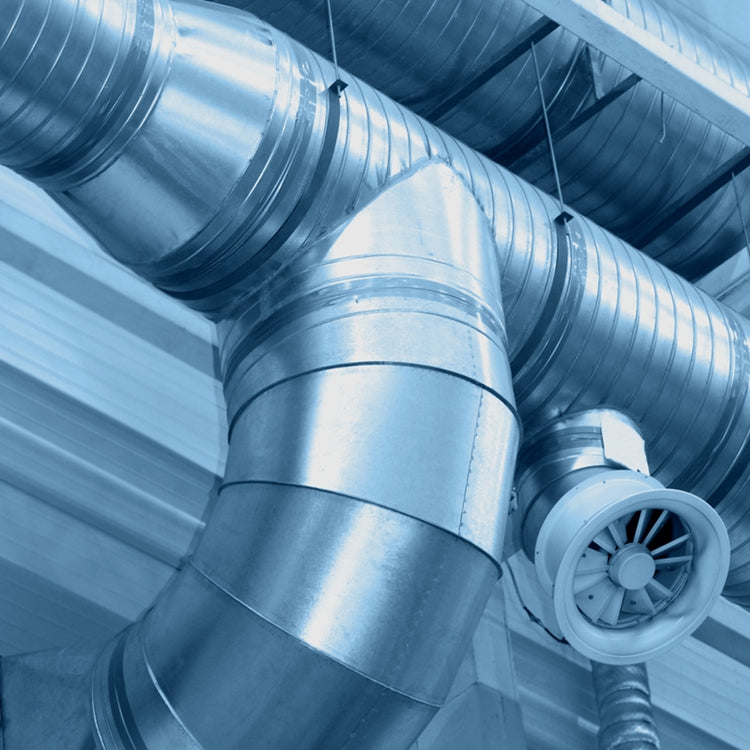
Emissions. Greenhouse gasses. These are all “hot“ topics in the news recently, and will only continue to be more relevant with time. The requirement for Heating, Ventilation and Air Conditioning (HVAC) as well as ancillary components such as fans and pumps are a necessity in the workplace to keep us cool in summer and warm in winter. Couple this with other functionality such as heating water and a variety of other uses, it is truly a part of your business that cannot be overlooked. But the use of boilers and other heating systems, so necessary for our comfort, are a bit of a double-edged sword. They are unfortunately emissions-heavy, and therefore we should take the time to make sure that these greenhouse gasses are efficiently managed and monitored.
How much of a contribution do boilers have to gas emissions?
Let’s look at your typical commercial building. It requires a significant amount of energy to keep it heated. In fact, an average of around 20% of a commercial building energy is required for heating alone. The amount of energy required when specifically looking at boilers is significant. Typically most of this energy is electricity powered from the main grid, but there are cases of some boiler models requiring energy sources such as independent natural gas or LPG.
In any instance where a significant amount of fuel is required to be used, there is going to be a release of greenhouse gasses. The heating of both residential and commercial properties is no exception.
The commonality between heating options is the requirement of fossil fuels used to power the boiler equipment. The creation of heat requires combustion, and the bi product of combustion is gas. These gasses include sulphur dioxide, carbon monoxide and carbon dioxide. It is these gasses that then are released and contribute to the greenhouse gas build up in our atmosphere.
While there are regulatory bodies that monitor the release of pollutants released by boiler and heating units, at the end of the day it's in every businesses best interests to make sure that testing is done accurately and efficiently. It’s not about just making sure you’re fitting within emission regulation, it's also to keep your workers safe by ensuring good air quality, and looking after our planet as well as possible. This is why technicians need the best equipment available when servicing and maintain heating systems within commercial and residential buildings.
How bad can it really be? Failing to test and record boiler emissions.
Remember that 20% statistic earlier in this blog post? When you have that much energy attributed to one component of the business, problems with not keeping track of its potential risk can exponentially increase if left unmonitored. A lack of accurate testing and recording of emission data can lead to a wealth of problems. Here’s why it is important:
- Not testing to see if the system is emitting higher than normal amount of gasses can mean servicing them is being done in vain – higher emissions are a tell-tale sign that repair work is needed
- Accurate testing provides a benchmark for whether the system is fit for purpose, or requires upgrading
- Too many emissions can lead to a buildup of carbon monoxide in work areas, putting your technicians at risk of serious consequences.
Often when technicians are analyzing boiler performance, they fail to check air quality. Without correct air quality, combustion is never going to be optimal. It is this reason that makes it so important to ensure that blowers, air ducts and controls are linked in order to create a better functioning unit. Exhaust gas measuring is also a metric that can be analysed to ensure that a unit is functioning correctly.
The Answer? Testo’s 350 Analysis Box
Designed to be intuitive, compact and easy-to-use, the Testo 350 Exhaust Gas Analysis system makes testing hassle free. It is a simple analyser ideal for reliable and accurate testing and analyzing gas.
- Six sensors (five of which are optional) designed to test hydrogen sulphide, nitrous oxide and other rare hydrocarbon gasses.
- Collects all measurement data and produces easy to understand reports, providing technicians expert insight into the inner workings of their equipment.
- Broad measurement range for unlimited data recording – even with high concentrations of gas present.
- Sturdy housing, sealed to help withstand operational conditions
- Bluetooth-enabled data management and exchange via the easyEmission software.
So when it comes to monitoring your boiler emissions for your commercial building, make sure you have the best equipment in the industry to do so! Get in contact with the Testo team if you have any questions regarding our Testo 350 Analyser box.

